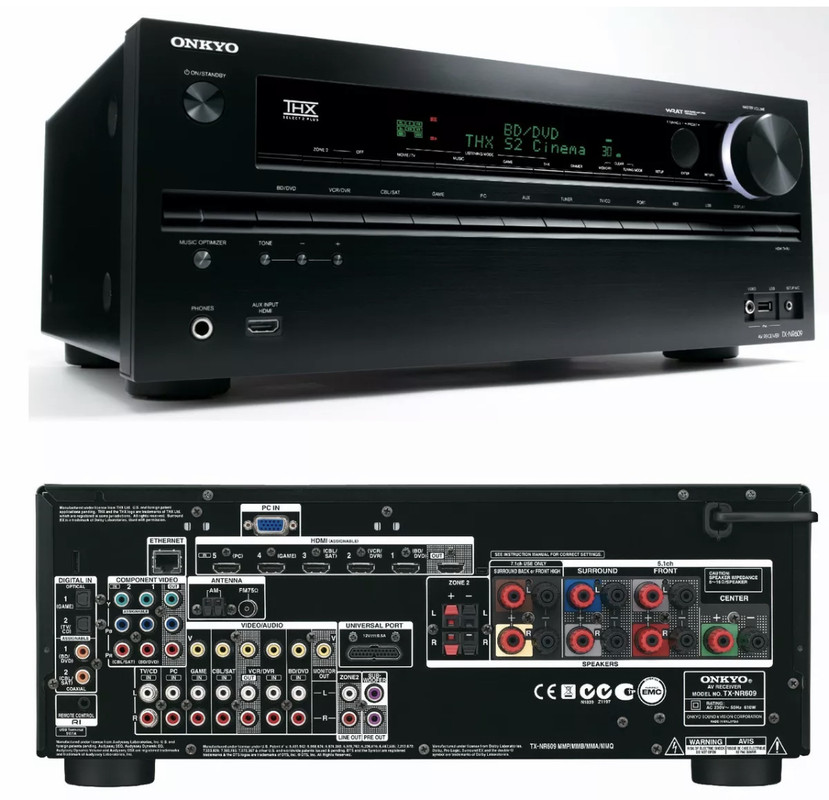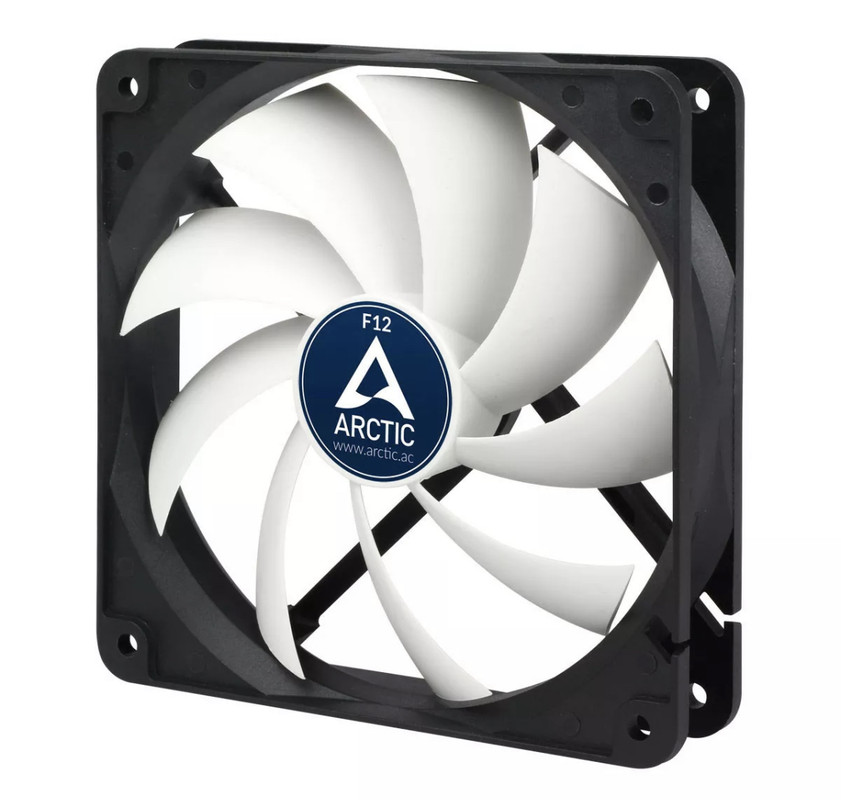Receiver running hot, want to wire in some fans
Discussion
Hi all,
Some advice please...
I'm on my second Onkyo TX-NR609... first died of overheating. Might be stupid, but I like its features so I've bought another one cheap off ebay.
In an attempt to try to keep it cool in future, I've bought a couple of Arctic F12 120mm computor fans.


Question... Is there likely to be 12v available on any of the boards so I can wire the fans in permenently? Or will I have to source a 240/12v inverter to power it directly from the mains power input?
Thanks in advance.
Cheers,
Effortless
Some advice please...
I'm on my second Onkyo TX-NR609... first died of overheating. Might be stupid, but I like its features so I've bought another one cheap off ebay.
In an attempt to try to keep it cool in future, I've bought a couple of Arctic F12 120mm computor fans.


Question... Is there likely to be 12v available on any of the boards so I can wire the fans in permenently? Or will I have to source a 240/12v inverter to power it directly from the mains power input?
Thanks in advance.
Cheers,
Effortless
bunchofkeys said:
Is that a USB port on the front? If so, could you not get a cheapy USB fan, and use that to power it?
It is... but that where i plug in my iphone :-)I wanted an internal fit-and-forget system if possible... i.e. have the fans running permenently in the background as soon as the unit is switched on. Didn't want any external fans/wires getting in the way.
Cheers,
Effortless
Mr Pointy said:
Where is it located? Is the ventilation restricted?
Located on top of a table with nothing stacked below it or on top... so ventilation as such isn't (shouldn't be) an issue.However there's plenty of internet chatter regarding these units running very hot, and overheating chips seems to be a reason for failure for many of them, hence my interest in installing some cooling fans inside the unit.
Perhaps a stupid purchase, as I said in the OP... but there's no fool like an old fool :-(
Cheers,
Effortless
If it is on a table top, just get a desktop fan and leave a breeze running over the unit. It doesn't need much of a breeze to cool the unit. Those little fans will make a lot of noise, the other thing could be all the thermal paste in the unit has dried up and needs replacing or they didn't put enough in there during assembly.
If it's already in free air then the only solution is to improve airflow through the case You could run it with the lid off for a start & if you don't like the open look then find someone to bend up a bit of open mesh into a U shape the size of the original top.
Is there any way you can add small heatsinks to the chips? The type the Raspberry Pi needs come with stick on thermal transfer pads:
https://www.amazon.co.uk/raspberry-pi-heatsink/s?k...
Is there any way you can add small heatsinks to the chips? The type the Raspberry Pi needs come with stick on thermal transfer pads:
https://www.amazon.co.uk/raspberry-pi-heatsink/s?k...
Mr Pointy said:
If it's already in free air then the only solution is to improve airflow through the case You could run it with the lid off for a start & if you don't like the open look then find someone to bend up a bit of open mesh into a U shape the size of the original top.
Is there any way you can add small heatsinks to the chips? The type the Raspberry Pi needs come with stick on thermal transfer pads:
https://www.amazon.co.uk/raspberry-pi-heatsink/s?k...
I wouldn't leave the lid off as this is likely to provide easy access to the 230v supply inside, if it is just you in the house then your risk but it is a hazard to anyone else.Is there any way you can add small heatsinks to the chips? The type the Raspberry Pi needs come with stick on thermal transfer pads:
https://www.amazon.co.uk/raspberry-pi-heatsink/s?k...
Bit expensive but this is what I'd be looking at:
https://www.amazon.co.uk/AC-Infinity-Cooling-Recei...
or even stick a laptop cooler on top of it.
https://www.amazon.co.uk/AC-Infinity-Cooling-Recei...
or even stick a laptop cooler on top of it.
Edited by Monty Python on Sunday 27th September 20:11
I’ve got an Onkyo which also runs hot. I bought a cheap laptop cooler and plugged it into the front USB, it didn’t seem to make much difference to the temps though.
A more expensive cooler might be better, but the 609 is a cheap amp these days and looks to go on eBay for about the same price as that 75 quid cooler, so you might be best just hoping for the best.
The amps have internal fans but I’ve never see mine on, despite it getting almost too hot to touch!
Best solution is the usb hub as mentioned above, the fan will turn on and off with the amp
A more expensive cooler might be better, but the 609 is a cheap amp these days and looks to go on eBay for about the same price as that 75 quid cooler, so you might be best just hoping for the best.
The amps have internal fans but I’ve never see mine on, despite it getting almost too hot to touch!
Best solution is the usb hub as mentioned above, the fan will turn on and off with the amp
Ive done this on a few amplifiers computers and radio gear over the years,
Ive even had to modify the metal work on units as its no point in providing air if you cant get that air flow over the items needing cooled !
You also need to ensure that you can get the air flow going and the exhaust air flow ducted out and away from the item being cooled or you might just end up with circulation and no cooling. The noise of the fans can also be a distraction !
its a black art cooling - using ducts and getting into the flow equations due to the length of the ducts etc. I did one modification where there was room enough to get a duct down to the rear and then have that air flow ducted inside to the chip area. heatsink area. and that air was drawn back out and dumped else where.
I looked at a radio transmitter and that required a small air to water intercooler, the water circuit with a small header tank and radiator outside and a water pump to get circulation. that worked a treat. but that might just be over board, it was a tight layout and temperature was causing issues. if you can get cool air onto your hot components and get that hot air pulled away.
Ive even had to modify the metal work on units as its no point in providing air if you cant get that air flow over the items needing cooled !
You also need to ensure that you can get the air flow going and the exhaust air flow ducted out and away from the item being cooled or you might just end up with circulation and no cooling. The noise of the fans can also be a distraction !
its a black art cooling - using ducts and getting into the flow equations due to the length of the ducts etc. I did one modification where there was room enough to get a duct down to the rear and then have that air flow ducted inside to the chip area. heatsink area. and that air was drawn back out and dumped else where.
I looked at a radio transmitter and that required a small air to water intercooler, the water circuit with a small header tank and radiator outside and a water pump to get circulation. that worked a treat. but that might just be over board, it was a tight layout and temperature was causing issues. if you can get cool air onto your hot components and get that hot air pulled away.
gottans said:
Mr Pointy said:
If it's already in free air then the only solution is to improve airflow through the case You could run it with the lid off for a start & if you don't like the open look then find someone to bend up a bit of open mesh into a U shape the size of the original top.
Is there any way you can add small heatsinks to the chips? The type the Raspberry Pi needs come with stick on thermal transfer pads:
https://www.amazon.co.uk/raspberry-pi-heatsink/s?k...
I wouldn't leave the lid off as this is likely to provide easy access to the 230v supply inside, if it is just you in the house then your risk but it is a hazard to anyone else.Is there any way you can add small heatsinks to the chips? The type the Raspberry Pi needs come with stick on thermal transfer pads:
https://www.amazon.co.uk/raspberry-pi-heatsink/s?k...
Gassing Station | Home Cinema & Hi-Fi | Top of Page | What's New | My Stuff






